America’s geological wonders don’t need erupting volcanoes to create breathtaking spectacles that look straight out of a science fiction movie. From towering mushroom-shaped rocks to mysterious moving stones, these formations were shaped by millions of years of erosion, weathering, and tectonic forces.
They create landscapes so bizarre and otherworldly that even seasoned travelers find themselves questioning whether they’ve somehow been transported to another planet. These places prove that nature is the ultimate artist.
Let’s explore ten extraordinary destinations where you can witness alien-like terrains without leaving Earth’s surface.
Goblin Valley State Park, Utah
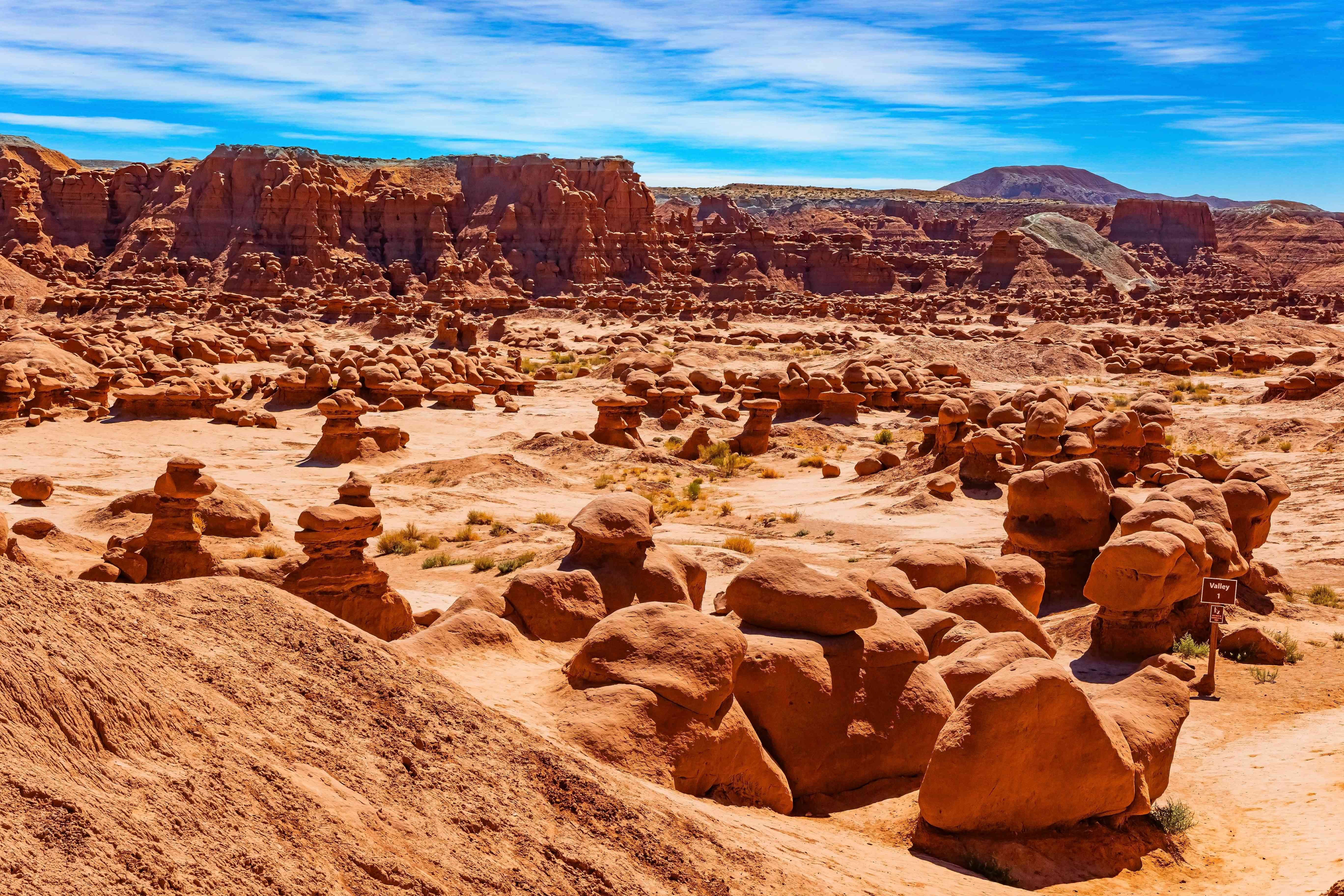
Goblin Valley in southern Utah is home to some of the most bizarre rock formations on Earth. Thousands of mushroom-shaped sandstone rocks, known as “goblins,” fill the valley, creating a surreal and alien-like landscape. These hoodoos were formed over millions of years through the erosion of soft sandstone, sculpted by wind and water into their distinctive shapes. The formations vary in size, with some standing as tall as 5 meters.
What makes Goblin Valley truly special is its playground-like atmosphere. There are no designated trails – you’re free to roam, climb, and explore wherever you want. It’s like nature’s version of a playground, with little passageways, alcoves, and hidden “rooms” formed by clusters of goblins.
The valley’s remote location and unique geology have made it a popular filming location for science fiction movies, further cementing its alien reputation.
Bisti/De-Na-Zin Wilderness, New Mexico

At first glance, the windblown sandstone landscape of the Bisti/De-Na-Zin Wilderness looks like the most desolate place on Earth, an inhospitable expanse of sky, sand, and oddly shaped rock formations called hoodoos. The Bisti/De-Na-Zin Wilderness area covers 45,000 acres of badlands just south of Farmington, New Mexico. This high desert wilderness features a vast landscape containing some of the most unique rock formations on this planet.
From the Alien Egg Hatchery or Egg Factory and Hoodoo City to Manta Ray Wing and King of Wings, the unique nature of these formations is truly otherworldly. Shaped by wind and erosion, these spires and hoodoos range from a few feet tall to two stories high.
While scientists might come to Bisti to dig for dinos, travelers are lured by the area’s rock formations, those undulating, seemingly abstract forms that create a landscape that resembles both the surface of the moon and a Looney Tunes Wild West backdrop.
Badlands National Park, South Dakota

Badlands contains some of the world’s most bizarre and “alien-looking” landscapes, classic examples of badland topography. The poorly consolidated bedrock consisting of loose sediment and volcanic ash is quickly eroded by infrequent rainstorms. Resulting mud mounds, spires, and ridges resemble miniature mountain ranges.
With hoodoos so closely associated with badland formations, it’s no surprise that a great destination for hoodoo viewing is the appropriately named Badlands National Park. Situated across the vast prairie of South Dakota, the scenic but underrated Badlands National Park is perhaps the single best example of the geological formation that gives it its name.
The park’s landscape earns this distinction thanks to its excellent combination of geological and climate factors that make the perfect recipe for badland formation. The ground underneath South Dakota’s prairies consists primarily of softer, clay-heavy rocks deposited in distinctive layers over time. As nearby rivers began to course through the landscape around 500,000 years ago, this soft rock eroded into the distinctive features you can see today.
The Valley of Dreams, New Mexico
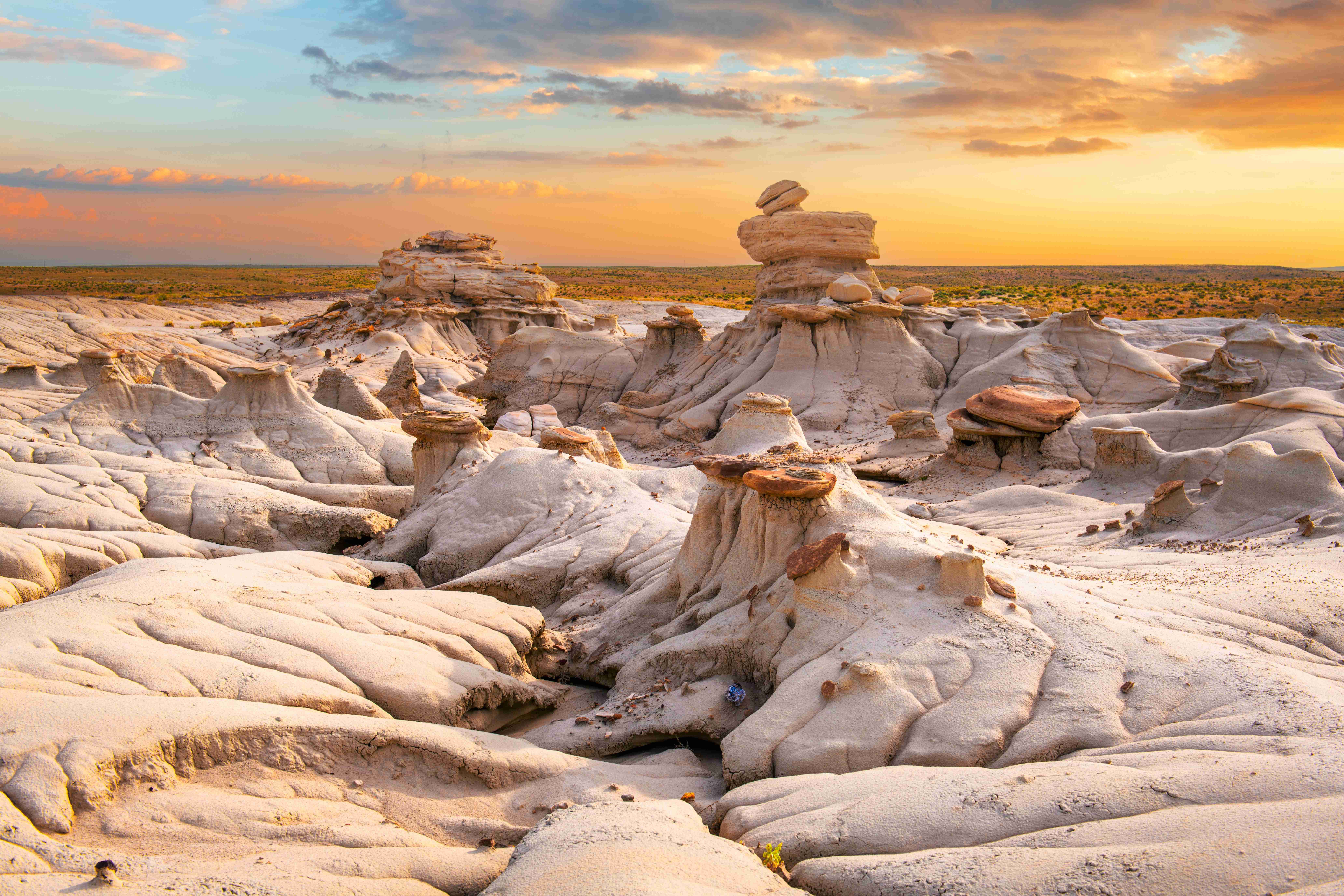
This unique landscape is known for its striking rock formations, including the renowned Alien Throne, as well as petrified wood and abundant fossil deposits. The Valley of Dreams is a remote badlands region in northwestern New Mexico, covering over 6,500 acres of the Ah-Shi-Sle-Pah Wilderness Study Area. This unique landscape is known for its striking rock formations, including the renowned Alien Throne, as well as petrified wood and abundant fossil deposits.
In New Mexico’s badlands, the Alien Throne is a wonder. The Alien Throne looks like it’s from another world. Its columns and connections seem to break natural rules. It’s a marvel that makes visitors wonder. The Giant Mushroom is a standout, looking like it’s floating in mid-air.
The Milky Way rock formations look like they’re from another world. You’ll also see the Chocolate Penguin King and the Petrified Wood Turtle, among others.
Death Valley’s Racetrack Playa, California

The Sailing Stones of Racetrack Playa in California’s Death Valley National Park are a geological mystery that has baffled scientists for decades. These large rocks, some weighing hundreds of pounds, move across the dry lakebed without any human or animal intervention, leaving long trails behind them. Recent research suggests that a combination of thin ice sheets and wind might be responsible for this phenomenon, but the exact process remains a subject of scientific curiosity.
The barren, isolated landscape of Death Valley, combined with the mysterious movement of these stones, gives the area an alien-like quality. The playa’s cracked, parched surface adds to the surreal effect, making it one of the most unusual and enigmatic places in the United States.
Death Valley is world-famous for the incredible size, shape, and exposure of alluvial fans. One of the most stunning and archetypal is the Copper Canyon Fan, spreading out from the Black Mountains.
Vasquez Rocks Natural Area Park, California

Vasquez Rocks Natural Area Park is a 932-acre (377-hectare) park located in the Sierra Pelona in northern Los Angeles County, California. It is known for its rock formations, the result of sedimentary layering and later seismic uplift. These rock formations were formed by rapid erosion during uplift about 25 million years ago, and then later exposed by uplift activity along the San Andreas Fault.
Its location, approximately 25 miles (40 km) from downtown Los Angeles, places it within Hollywood’s “studio zone” and makes it a popular filming location for films and television programs.
The distinctive hogback ridges of steeply inclined strata serve to graphically demonstrate the significant fault activity in the area. These jagged, tilted sandstone slabs create an otherworldly backdrop that seems almost too dramatic to be natural.
Devils Tower National Monument, Wyoming
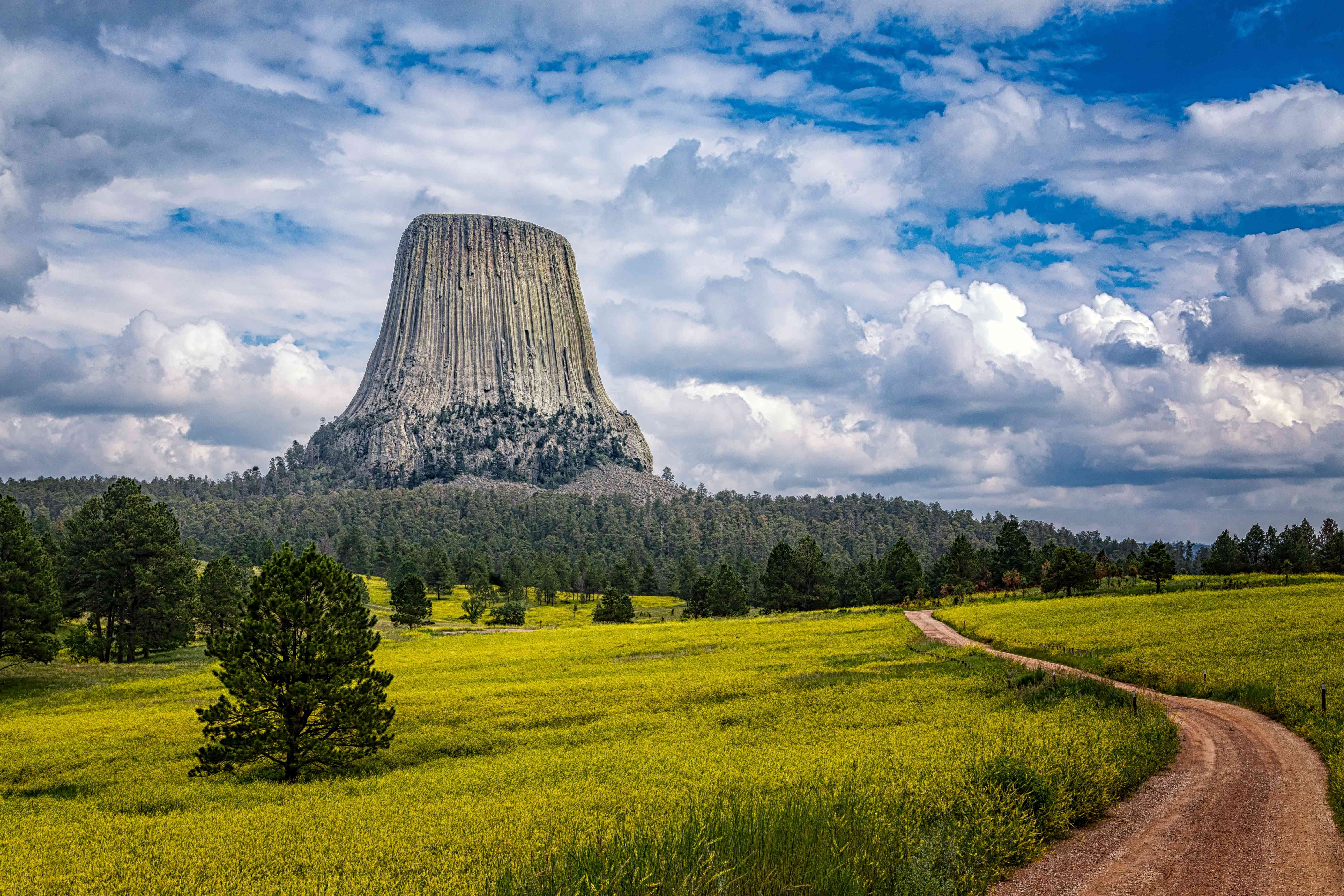
Devils Tower in northeastern Wyoming rises dramatically 867 feet (264 meters) above the surrounding landscape, creating an eerie, monolithic presence. Known as “Bear Lodge” to some Native American tribes, it holds a sacred place in many indigenous stories. This unique rock formation is believed to have been created by the solidification of magma within the Earth’s crust, which later became exposed through erosion.
Its most striking feature is the hundreds of vertical cracks that run along its surface, creating fluted columns that seem almost too symmetrical to be natural. These columns, visible from miles away, contribute to the tower’s alien appearance. This impressive igneous intrusion is a monolithic rock formation that reaches a height of 867 feet (264 meters) above the surrounding landscape.
Its unique appearance, with vertical columns and hexagonal patterns, sets it apart from other geologic formations in the region. Its prominence in pop culture, particularly in films like Close Encounters of the Third Kind, adds to its mystique.
Kasha-Katuwe Tent Rocks National Monument, New Mexico
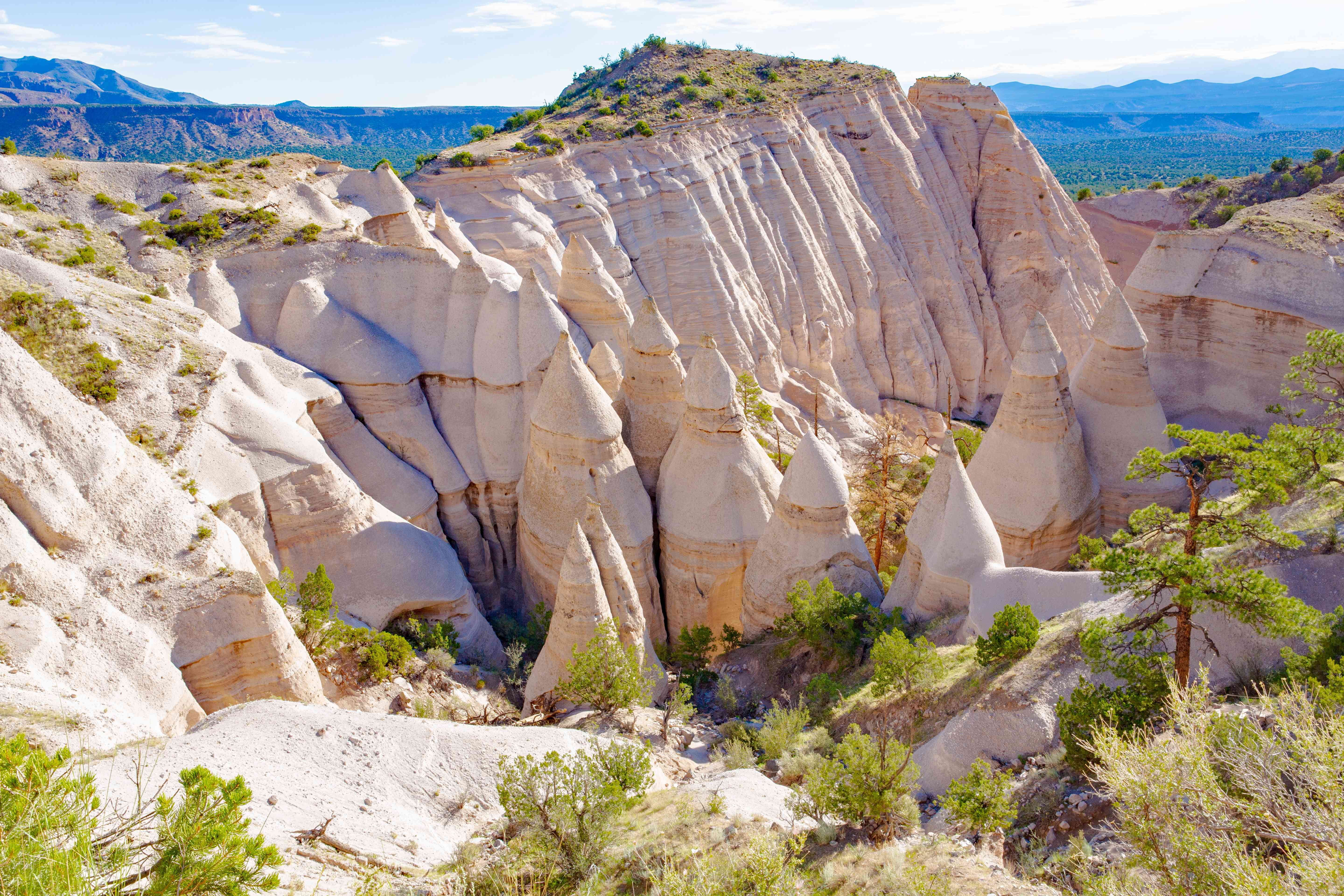
Around 6 million years ago, volcanic eruptions blanketed this area of northern New Mexico in lava, pumice, and ash. Since then, the elements have slowly whittled these remnants down to Kasha-Katuwe Tent Rocks National Monument’s distinctive cone-shaped “tents”. Some of the formations here reach up to 90 feet in height, and their alien appearance isn’t lost on anyone: in the mid-90s, it was used as a set piece for the short-lived sci-fi series, Earth 2.
Kasha-Katuwe Tent Rocks, located near Santa Fe, is famous for its cone-shaped hoodoos. These formations, created by volcanic eruptions millions of years ago, offer a unique hiking experience through narrow canyons and towering rock spires.
The pale, cream-colored rocks stand like ancient teepees scattered across the desert floor, creating a landscape that feels both mystical and otherworldly.
Fantasy Canyon, Utah
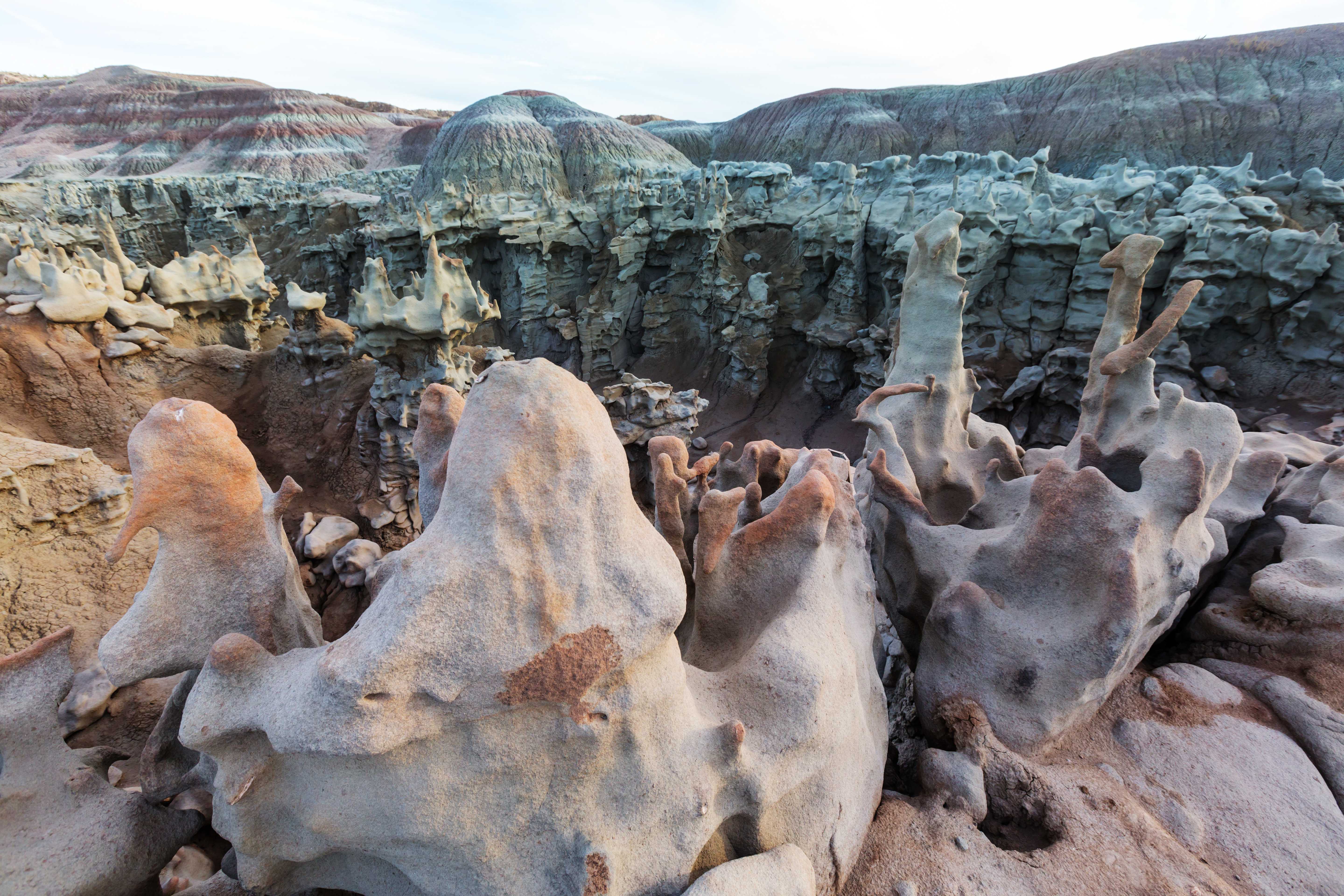
Fantasy Canyon in Utah is a hidden gem that’s a must-see for anyone who loves unique landscapes. Located about 27 miles south of Vernal, Fantasy Canyon is famous for its bizarre and intricate stone formations. Utah’s Fantasy Canyon offers a unique experience for nature lovers and adventure seekers.
The stone formations found here are unlike anything else, making it a must-visit spot. Exploring these geological wonders provides a glimpse into the Earth’s history, showcasing the power of natural forces over millions of years.
The Alien’s Garden is a section of the canyon where the rocks take on bizarre, otherworldly shapes. It’s easy to imagine you’re on another planet as you explore this area. The Wizard’s Tower is a tall, narrow formation that looks like it could be the home of a magical sorcerer.
It’s one of the tallest structures in Fantasy Canyon. Visiting Fantasy Canyon is not just about seeing rocks; it’s about experiencing a place where nature’s artistry is on full display. The intricate shapes and formations spark the imagination, making every visit a new adventure.
Mushroom Rock State Park, Kansas
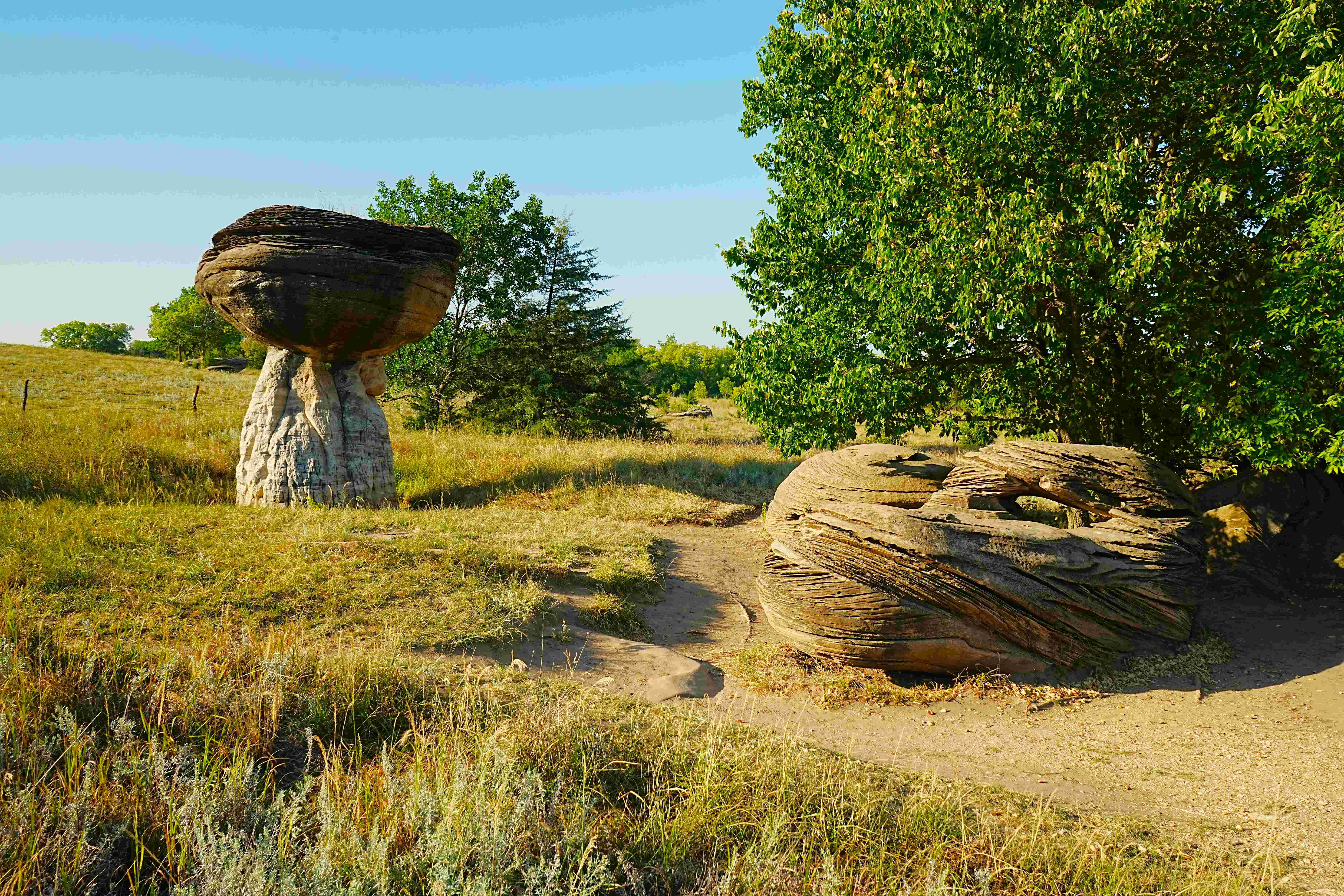
“Everyone has preconceptions or misconceptions that Kansas is flat and boring. And then you find these little pockets of weird geology that seem so out of place,” Jon J. Smith, a sedimentary geologist with the Kansas Geological Survey, told Thrillist. “They still hold some mystery and wonder and are just as interesting as if I didn’t know how they were formed.”
The largest of these sandstone formations is over 25 feet around, according to the Kansas Department of Wildlife & Parks, and you are able to walk through and around them; the trails are all short and easy. To understand how the rocks at Mushroom Rock State Park came to be, you first have to go back to the Cretaceous Period, between 66 million and 145 million years ago.
These massive stone mushrooms seem impossibly balanced, defying gravity as they stand in the middle of the Kansas prairie like forgotten monuments from an ancient civilization.
These geological marvels remind us that Earth itself is the greatest artist of all. Each formation tells a story spanning millions of years, carved by forces so gradual yet powerful that they can transform solid rock into sculptures that seem to belong on distant worlds. What’s your favorite alien landscape? Tell us in the comments.
